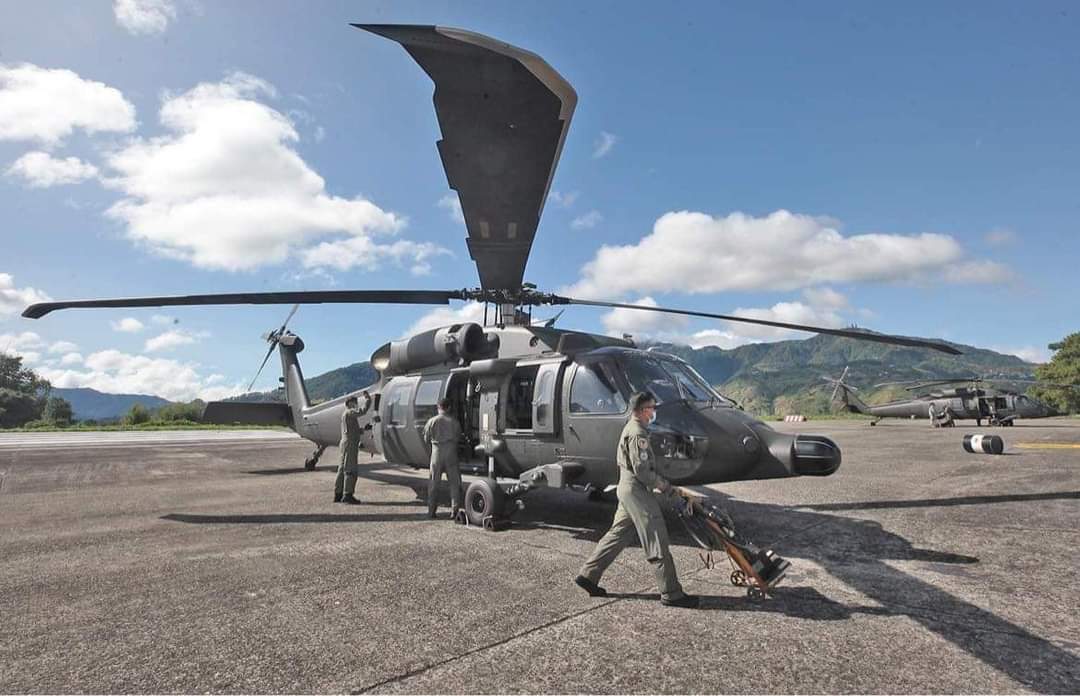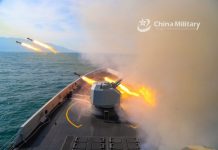As part of ongoing US-Philippines military drills under the ‘Balikatan’ banner, the lethal Black Hawk helicopters and the state-of-the-art Patriot missile defense systems demonstrated their capabilities in a move aimed at bolstering Manila’s combat readiness.
Russia ‘Eliminates’ Four Ukrainian Fighter Jets, Menaces Japan By Flying Tu-22 Bomber, Simulating Strikes On Disputed Islands
Earlier this month, the largest combat exercises by the United States and the Philippines in decades were launched in the waters across the South China Sea and the Taiwan Strait. More than 17,600 military men are participating in the annual exercises by the long-term treaty allies.
In an air assault planning drill held as part of these exercises, the Philippine Army (PA) and United States Army Pacific (USARPAC) demonstrated their capabilities using the Black Hawk helicopter, Manila Bulletin reported.
On April 21, 81 personnel of the PA’s 99th Infantry Battalion, 7th Infantry Division, and their USARPAC counterparts conducted a “hot and cold load training” at the Aviation Regiment Airstrip, Fort Magsaysay.
The military prioritizes cold and hot training to improve the soldiers’ proficiency with entering and leaving an aircraft during a live run.
The Black Hawk helicopters also saw action with the air force. The Philippines Air Force (PAF) carried out a separate air assault exercise in Zambales on April 19 using two Black Hawks to demonstrate the troops’ readiness for rapid deployment in combat situations and during the medical evacuation and to give them practical experience carrying out heliborne assault operations.

Manila purchased these advanced military choppers not too long ago. The Philippines Department of National Defense (DND) signed a contract to acquire 32 additional S-70i Black Hawk combat utility helicopters last year, taking the number of Black Hawks in its fleet to 48.
The S-70i Black Hawk helicopter is the newest member of the Black Hawk series of multi-mission aircraft. Mission-specific configurations for the S-70i helicopter include troop transport and air assault, command and control, border patrol, search and rescue, cargo lift, and VIP transportation.
Besides the Black Hawk helicopters, another system saw simulated combat action: the venerable and sought-after Patriot missile defense system.
On April 19, at the Naval Education, Training and Doctrine Command (NETDC) Center in San Antonio, Zambales, personnel from the PAF’s 960th Air and Missile Defense Group (AMDG) and American counterparts from the 38th Air Defense Artillery Brigade participated in the Air and Missile Defense subject matter expert exchange (SMEE).

PAF spokesperson Colonel Ma. Consuelo Castillo announced that American subject matter experts displayed the Patriot missile defense system’s capabilities and its missile launchers while instructing the Filipino soldiers on how to use the system. Patriot is a missile defense system comprising radars, command-and-control technology, and various interceptors.
Consuelo believes that the PAF personnel will benefit from the expertise they get due to the US military’s first deployment of the Patriot missile system to the Philippines. Earlier this month, the Patriot missile system was deployed in Aparri in the Cagayan province in the northern Philippines.
“The aforementioned exercise broadened the understanding of the Air and Missile System Operators of 960thAMDG on air and missile defense operations. Likewise, it strengthened ties and comradery between the Philippine Air Force and its US counterparts,” Consuelo said.
US-Philippines Military Cooperation Is Strengthening
The Balikatan exercises are the most recent American show of force in Asia, where Washington has frequently cautioned China about its more assertive activities in the disputed South China Sea and against Taiwan.
The Biden administration has established a network of allies in the Indo-Pacific to fight China better, including in a potential conflict over Taiwan.
This aligns with the country’s efforts under President Ferdinand Marcos Jr. to protect its territorial interests in the South China Sea by stepping up joint military drills with the US and permitting rotating groups of American forces to stay in more Philippine military bases under a 2014 defense agreement.
The drills, the biggest in Balikatan’s three-decade history, involve over 12,200 US military personnel, 5,400 Filipino forces, and 111 Australian troops. “We are not provoking anybody by simply exercising,” Colonel Michael Logico, a Philippine spokesperson for Balikatan, told reporters ahead of the drills.
“This is actually a form of deterrence,” Logico said. “Deterrence is when we are discouraging other parties from invading us.”
As China continues to expand its territorial claims and assert sovereignty over the South China Sea, it is believed to have pushed The Philippines closer to its long-term ally, the United States. The ongoing drills and their locations close to Taiwan are likely to enrage China which has already criticized the US for expanding its presence in the region.
Patriots from Balikatan 2023 and 2022:
-Both deployed with PAC-3 and PAC-3MSE.
-BK22 had Patriots in Cagayan on the Luzon Strait. BK23 has them in Zambales on the WPS.
-Patriots at BK23 are deployed with Avengers paired with Sentinel A4 radar for SHORAD. pic.twitter.com/Kr6VzdY7tK— Aaron-Matthew Lariosa (@Aaron_MatthewIL) April 22, 2023
Earlier this year, US Defense Secretary Lloyd Austin and Philippines’ Defense Secretary Carlito Galvez said in a joint news conference at the Philippine military headquarters in Manila that the United States would be given access to four more bases under the 2014 Enhanced Defense Cooperation Agreement (EDCA).
Three of the sites are on the main island of Luzon, near Taiwan, while one is in Palawan province in the South China Sea (SCS). China, on its part, has vehemently opposed the move by Manila to provide additional access to its military bases in Washington.
However, the cooperation between the two states practicing under the Balikatan banner will only deepen when the exercises conclude on April 28.
- Contact the author at sakshi.tiwari9555 (at) gmail.com
- Follow EurAsian Times on Google News




